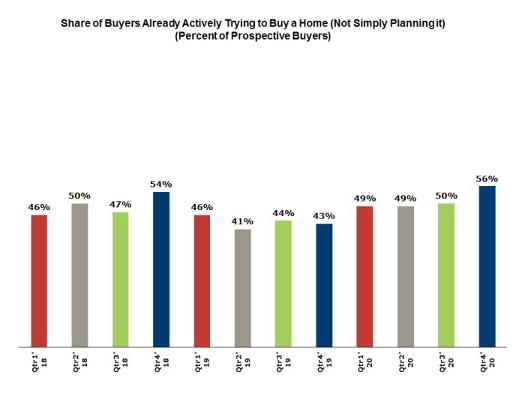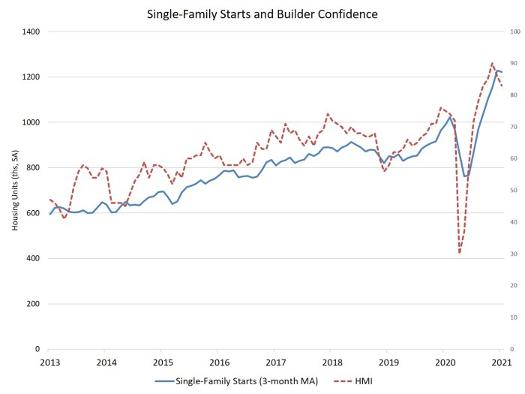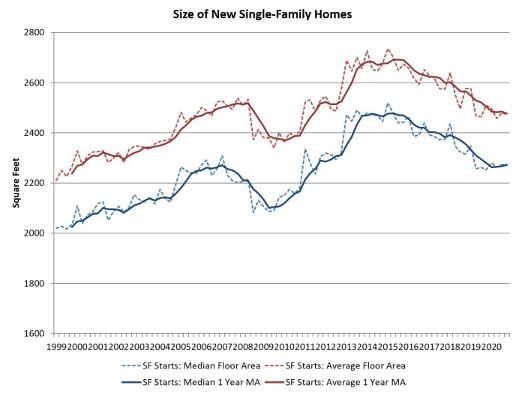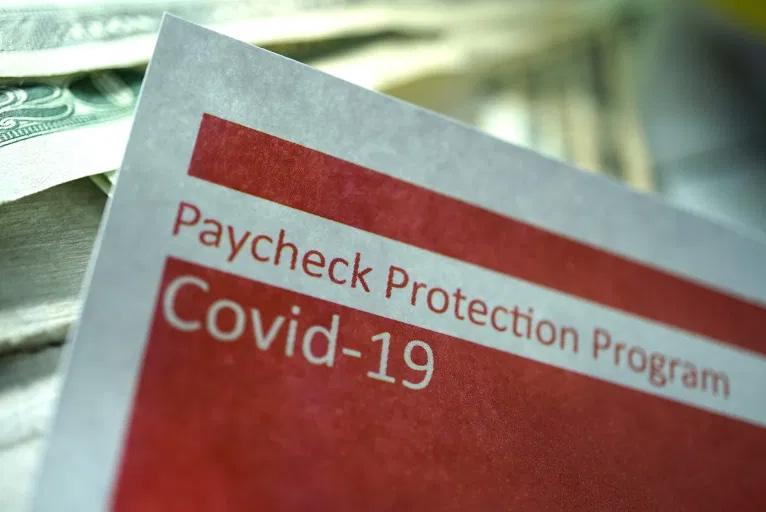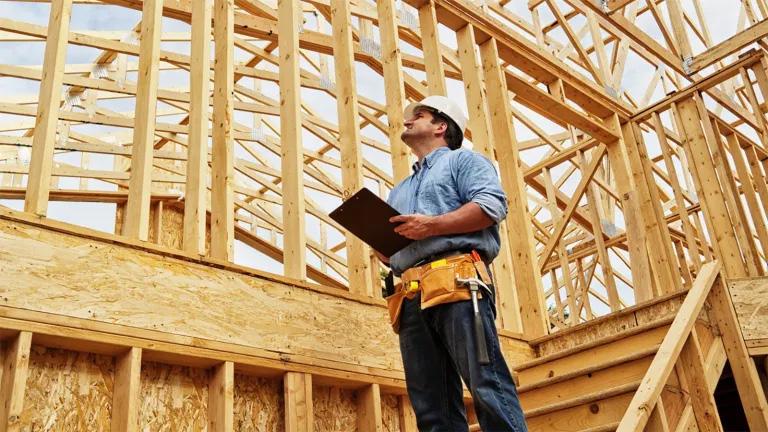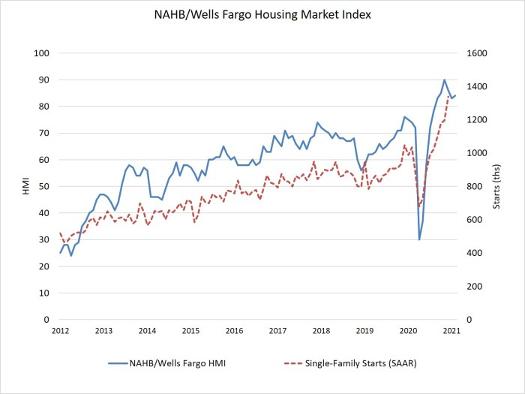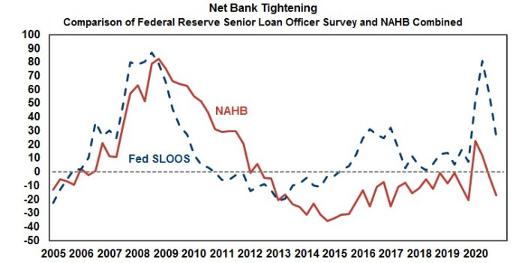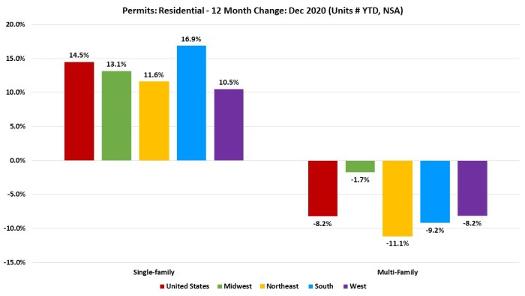CONSTRUCTION HEADWINDS Pick Up in January
H
BY ROBERT DIETZ
ousing production softened in January as rising lumber prices continue to affect the housing industry. Overall housing starts decreased 6% percent to a seasonally adjusted annual rate of 1.58 million units, according to data from the U.S. Department of Housing and Urban Development and the U.S. Census Bureau. The January reading of 1.58 million starts is the number of housing units builders would begin if development kept this pace for the next 12 months. Within this overall number, single-family starts decreased 12.2 percent to a 1.16 million seasonally adjusted annual rate. The multifamily sector, which includes apartment buildings and condos, increased 17.1 percent to a 418,000 pace, well ahead of the NAHB forecast. Despite ongoing solid homebuyer traffic, the weakness in housing starts in January is consistent with recent softening of the NAHB/Wells Fargo Housing Market Index (HMI). Builders report concerns over increasing lumber and other construction costs and delays in obtaining building materials. Rising interest rates will also erode housing affordability in 2021, as inventories of existing homes remain low. Builders also reporting growing concerns about a more challenging regulatory environment that could limit land development volume. The NAHB forecast includes some weakening for single-family home building at the start of 2021, with a return to the long-run post-Great Recession trend as the year progresses. It is also worth noting that the number of single-family homes permitted but not started construction jumped to 114,000 units in January. This is 9.6 percent higher than December and 28.1 percent higher than a year ago, as building material cost increases and delays slow some home building.
page 24
www.ncbia.com
February 2021

